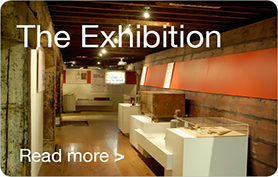The accounts of Matthew Flinders, Charles Sturt and other early explorers had shown the new province to be occupied by Aboriginal people, but their numbers, disposition and ways of life were almost entirely unknown in England. The British Colonial Office, keen to avoid the bloodshed that had accompanied the settlement of New South Wales and Tasmania, inserted in the Letters Patent a clause intended to secure the protection of the Aboriginal peoples’ rights to land, and forced the Colonization Commissioners to make other concessions, including the appointment of a Protector to safeguard Aboriginal interests in the new province.
Aboriginal people had occupied the land for at least 40,000 years. At the time the province was established there were about 40 ‘tribes’ across the state, each with its own distinct dialect and territory, but linked to its neighbours by intermarriage and ceremonial and trading links. The Aboriginal people who occupied the eastern shores of Gulf St Vincent lived in extended family groups or clans, each linked to a certain tract of country. The early settlers referred to these clans as ‘the Adelaide tribe’, ‘the Willunga tribe’, ‘the Rapid Bay tribe’, ‘the Gawler tribe’ and ‘the Para tribe’.
Even before the establishment of the province, Aboriginal people in the south-east of the state had had contacts with outsiders. Sealing crews based on Kangaroo Island and other offshore islands since the 1820s had made occasional raids on coastal Aboriginal camps on the Fleurieu, Yorke and Eyre Peninsulas to kidnap women, who were taken back to the islands by the sealers.
In about 1830 smallpox spread down the River Murray from the colonies in eastern Australia, and caused great loss of life among Aboriginal people all along the river to its mouth. The disease also spread to the Aboriginal tribes of the Adelaide Plains, Mid-North and Yorke and Eyre Peninsulas, and early settlers in those regions observed Aboriginal survivors of the epidemic who bore the distinctive pock-marked scars.
Estimates of the total Aboriginal population of the area which became South Australia range from about 10,000 to 20,000 people. Approximately two-thirds of these people lived in the more fertile south-eastern part of the state, including the Adelaide Plains and nearby ranges, the River Murray, the Coorong and the South-East. Several early reliable sources suggest that the Aboriginal groups on the plains between Gawler and Myponga numbered about 300 people in total.



Hey mate! I completely agree with your opinion. I really like what you’re doing here.